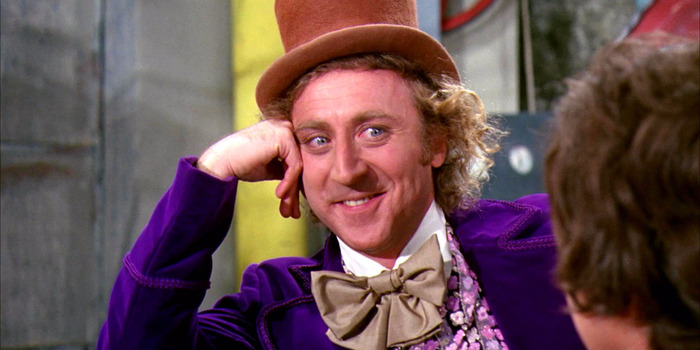One of the most iconic moments in the beloved film Willy Wonka & The Chocolate Factory is when the eccentric candy maker introduces his latest invention: lickable wallpaper. As the children eagerly taste the various flavours, Willy Wonka exclaims, “Lick an orange. It tastes like an orange. The strawberries taste like strawberries! The snozzberries taste like snozzberries!”
While this whimsical scene is a fan favourite, it harbours a surprisingly filthy joke. The term “snozzberries” isn’t just a nonsensical word—it has a much more explicit meaning, revealed by Roald Dahl, the author of the original book.
The Disturbing Origin of “Snozzberries”
Roald Dahl’s dark sense of humour is well-documented, but the true meaning of “snozzberries” takes it to another level. In his 1979 adult novel, My Uncle Oswald, Dahl revisits the term in a decidedly adult context. The book follows Oswald Hendryks Cornelius, who, along with his seductive accomplice Yasmin Howcomely, devises a scheme to collect and sell the semen of famous men.
In one particularly explicit passage, Yasmin recounts her method for handling a difficult situation with George Bernard Shaw:
“How did you manage to roll the old rubbery thing on him?”
“There’s only one way when they get violent,” Yasmin said. “I grabbed hold of his snozzberry and hung onto it like grim death and gave it a twist or two to make him hold still.”
“Ow.”
“Very effective.”
“I’ll bet it is.”
“You can lead them around anywhere you want like that.”
“I’m sure.”
“It’s like putting a twitch on a horse.”
Implications for Willy Wonka’s Innocent World
This revelation casts the whimsical wallpaper scene in a deeply unsettling light. Given that Charlie and the Chocolate Factory was published in 1964, a full 15 years before My Uncle Oswald clarified the meaning of “snozzberry,” it suggests that the wallpaper in Willy Wonka’s factory tasted like something far more inappropriate.
Willy Wonka’s Darker Undertones
Roald Dahl’s writing often straddled the line between whimsical and darkly humorous, but the discovery of this hidden joke suggests a much darker undertone to Wonka’s character. If “snozzberries” are indeed what Dahl later described, it paints Willy Wonka as a character with deeply inappropriate tendencies, adding a layer of adult humor to an otherwise innocent children’s story.
Conclusion
The term “snozzberry” in Willy Wonka & The Chocolate Factory is a prime example of Roald Dahl’s twisted sense of humour. While the film remains a beloved classic, this hidden joke reveals a side of Dahl’s storytelling that is far more adult and controversial. Understanding the true meaning behind “snozzberries” offers a new, albeit disturbing, perspective on this iconic scene.
For fans of Dahl’s work, this revelation underscores the complexity and often dark humour that pervades his stories, making his works both memorable and multi-layered. As we continue to enjoy the whimsical world of Willy Wonka, it’s intriguing—and a bit unsettling—to consider the hidden meanings that lie beneath the surface.
